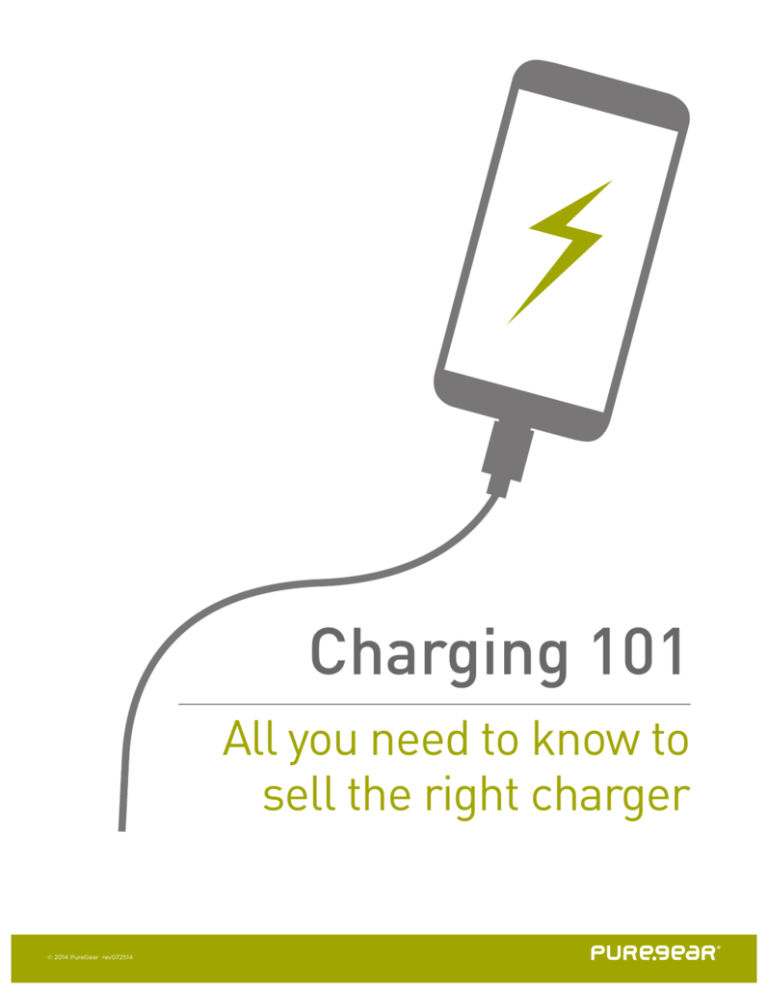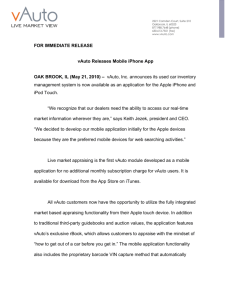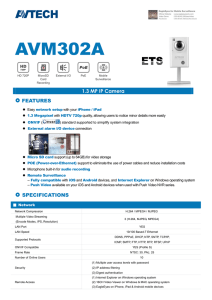Charging 101
advertisement

Charging 101 All you need to know to sell the right charger © 2014 PureGear rev072514 Volts, Amps, Watts: What do they mean? Transformer Volts x Amps = Watts You need to understand some basic concepts about electricity flow to grasp the relationship between Voltage, Amps and Watts. The movement of electrons between two points is the flow of electricity - Here is an analogy - picture a water hose, the pressure difference between two points in the hose is what causes the water to flow, that pressure can be created by a pump, gravity and turning open a valve. In an electrical circuit the pressure is created at the generating station; hence, the high voltage lines we see all around. In electrical terms, the number of electrons in motion in a circuit is called the current, and it’s measured in Amps (A). The "pressure" pushing the electrons along is called the voltage and is measured in Volts (V). Power (W) is Voltage (V) x Current (A) measured in Watts (W). 00080PG 353 ITE Power ® Supply C 188594 US AC ADAPTER INPUT:100-240-0.2A 50-60Hz OUTPUT: 5.0V~1A MADE IN CHINA Using the above label as an example, you can see output of 5.0V~1A, which translates into a 5W charger. Notice the higher input voltage, all chargers have a transformer to regulate the required power at the output. The transformer is a key component inside © 2014 PureGear rev072514 Controls stability of power flow required by devices. USB Port Controller Chip a charger with the remaining components playing vital roles in controlling the flow and stability of the power required by the device. Image above shows the transformer, controller chip and other components. Let’s not forget about the input side voltage which is the 120V that comes out of the wall plugs in the US. Most charging labels show the range for input all the way to 240V. In Europe and many other countries, the actual wall socket voltage is 220V. This is an added benefit for both business and leisure travelers, having a dual-voltage charger. In markets like DC, NYC, Chicago, LA, Miami, Seattle etc. this is a useful selling point for those planning overseas trips (note that an adapter maybe required to plug in the charger overseas but the customer need not worry about the voltage coming out of the wall socket). What to offer a customer when it comes to charging devices 2) C ertification & Compliance There are three (3) key points to remember: 1) Device 2) Certification & Compliance 3)The Customer’s Needs Chargers manufactured by well-known brands and those branded by the major wireless carriers adhere to these strict design, engineering and quality standards: Underwriters Laboratories (UL) CSA Group (CSA) American National Standards Institute (ANSI) Apple has its own certification in addition to the aforementioned, Made for iPhone, iPad & iPod program (MFi) Apple’s MFi Program encompasses third-party hardware accessories such as chargers which use Apple’s licensed technology to connect electronically to an iPhone, iPad or iPod. The certification marks shown here demonstrate to your customers that a sample of the product has been certified to applicable standards, providing them with a safe and reliable product. Some low cost charging solutions do not adhere to these standard and/or use counterfeit packaging to show compliance. Is your safety worth the savings? This excerpt is from a recent news story: 1) D evice For some time now the standard for charging most cell phones and other mobile devices has been 5V~1A, 5W. From the iPhone to Samsung’s popular Galaxy line. But that’s changing, as screen sizes become larger, resolutions increase, cameras get better and have more functions. Newer cell phones need more than 1A (see table at the end). Tablets have required more than 5W for some time. An iPad Air requires 12W or 5V~2.4A to charge. © 2014 PureGear rev072514 "We have had more than just a few stories about an Apple iPhone or Apple iPad that shocked the user of the device. In one unfortunate case, a 23 year old flight attendant, less than a month away from getting married, was killed by a shock she received when answering a call on her Apple iPhone 5 while it was recharging. In another harrowing tale, an eight-year old’s Apple iPad sent a severe shock through her dad’s body, allegedly sending him flying across the room. Had it been the daughter that had touched the slate, the shock might have done her in. As it turns out, in most of these situations, it was a fake or knock-off charger that was responsible for the shock." Posted: May 22, 2014, http://www.phonearena.com/news/ 3) W hat are your Customer’s Needs? This is THE most important step in selling a charging solution. Always ask customers if they own tablets or multiple devices. Charge one device or two? Charge at home, in car or both? Charge at the same time? Apple Devices iPhone 2 iPhones (Simultaneous) • • • • • • • 5W Single Output (5V~1A) 10.5W Single Output (5V~2.1A) 10W Dual Outputs (5V~2A) 12W Single Output (5V~2.4A) 15.5W Dual Outputs (5~V3.1A) 17W Dual Outputs (5V~3.4A) 24W Dual Outputs (5V~4.8A) iPad iPhone + iPad (Simultaneous) 2 iPads (Simultaneous) • • • • • • • • • • • Non Apple Devices Phone 5W Single Output (5V~1A) 10W Single Output (5V~2A) 10W Dual Outputs (5V~2A) 12W Single Output (5V~2.4A) 15W Dual Outputs (5V~3.1A) 17W Dual Outputs (5V~3.4A) 24W Dual Outputs (5V~4.8A) 2 Phones (Simultaneous) • • • • • • • Tablet • • • • • • • • • • Tablet + Phone (Simultaneous) 2 Tablets (Simultaneous) • • • • • • Device Specific Examples OS Output Power (Watts) Required Input Voltage (Volt) Recommended Charging Current (Amp) Required Input Current (Amps) HTC One M8 Android 5.0 5 – 1.0 LG G Flex; G Pro 2; G2; (Google) Nexus 5 Android 8.5 5 2.0 1.7 Motorola Droid Maxx; Droid Ultra Android 4.0 5 1.0 0.8 Motorola Moto G Android 2.8 5 1.0 0.6 Motorola Moto X Android 5.8 5 – 1.2 Nokia Lumia Icon Windows 7.0 5 2.0 1.4 Samsung Galaxy S4; Galaxy S5; Galaxy Tab 3 – 7"; Galaxy Tab 4 - 10.1"; Galaxy Note 3 Android 8.5 5 2.0 1.7 © 2014 PureGear rev072514






